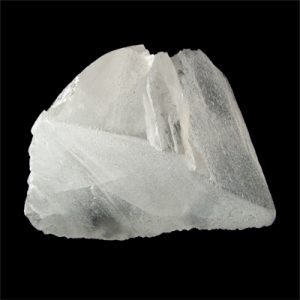Kaliborite
Kaliborite is a borate that is extremely rare that is only found in a few places in the entire world. Gemmy crystals are small and just available through the Inder borate deposit, Atyrau Oblast’, Kazakhstan. Kaliborite crystals are usually tiny, clear, colorless to white with vitreous lustre and a Moh’s hardness of 4 – 4.5. the formula of this stone is KHMg2B12O16(OH)10 • 4(H2O) (Hydrated Potassium Magnesium Borate Hydroxide) and its molecular weight is 719.56 gm. In addition to being extremely unusual, Kaliborite is difficult to face since it is slightly soluble in water. When coming to the crystal habit of this stone is Small crystals typically with uneven face development; in powdery aggregates, granular and massive. Fine-grained nodular masses. Microscopic rhombic scales with plane angles of about 62°, with the acute angle, truncated to a yield a hexagonal outline at times. Crystals frequently aggregated and with asymmetrical development. Kaliborite is also slightly radioactive because of its potassium content.
Kaliborite was found and named in 1889 by German chemist Dr Wilhelm Friedrich Feit (1867-1956) for the KALIum (Latin title for potassium) and BORon in its chemical structure august.
Kaliborite distribution: In Germany, in Saxony-Anhalt, from Schmidtmannshall, near Aschersleben; Neustassfurt and Leopoldshall, in Stassfurt, 34 south that is km of. At Sallent-Balsareny, Barcelona Province, Spain. From Monte Sambuco, Calascibetta, Sicily, Italy. During the Inder borate deposit, Kazakhstan. In the USA, from the Eagle Borax Spring, Furnace Creek district, Death Valley, Inyo County, California.
| Chemical Formula: | KHMg2B12O16(OH)10 • 4(H2O) |
| Hydrated Potassium Magnesium Borate Hydroxide | |
| Molecular Weight: | 719.56 gm |
| Composition: | Potassium | 5.46 % | K | 6.57 % | K2O |
| Magnesium | 6.78 % | Mg | 11.25 % | MgO | |
| Boron | 18.10 % | B | 58.29 % | B2O3 | |
| Hydrogen | 2.67 % | H | 23.88 % | H2O | |
| Oxygen | 66.98 % | O | |||
| 100.00 % | 100.00 % | = TOTAL OXIDE |
| Crystallography: | Monoclinic – Prismatic |
| Crystal Habit: | Small crystals typically with uneven face development; in powdery aggregates, granular and massive. Fine-grained nodular masses. Microscopic rhombic scales with plane angles of about 62°, with the acute angle, truncated to a yield a hexagonal outline at times. Crystals frequently aggregated and with asymmetrical development. |
| Twinning: | None |
| Cleavage: | Perfect on {001} and {101}. Good on {100}. |
| Fracture: | Irregular/uneven |
| Tenacity: | Brittle |
| Moh’s Hardness: | 4.0 – 4.5 |
| Density: | 2.116 – 2.128 (g/cm3) |
| Luminescence: | None |
| Radioactivity: | Barely Detectable; GRapi = 79.53 (Gamma Ray American Petroleum Institute Units) |
| Other: | Slightly soluble in water. Readily soluble in acids. |
| Color: | Colorless to white, uncommonly reddish brown; colorless in transmitted light. |
| Transparency: | Transparent |
| Luster: | Vitreous |
| Refractive Index: | 1.508 – 1.550 Biaxial ( + ) |
| Birefringence: | 0.042 |
| Dispersion: | None |
| Pleochroism: | None |


